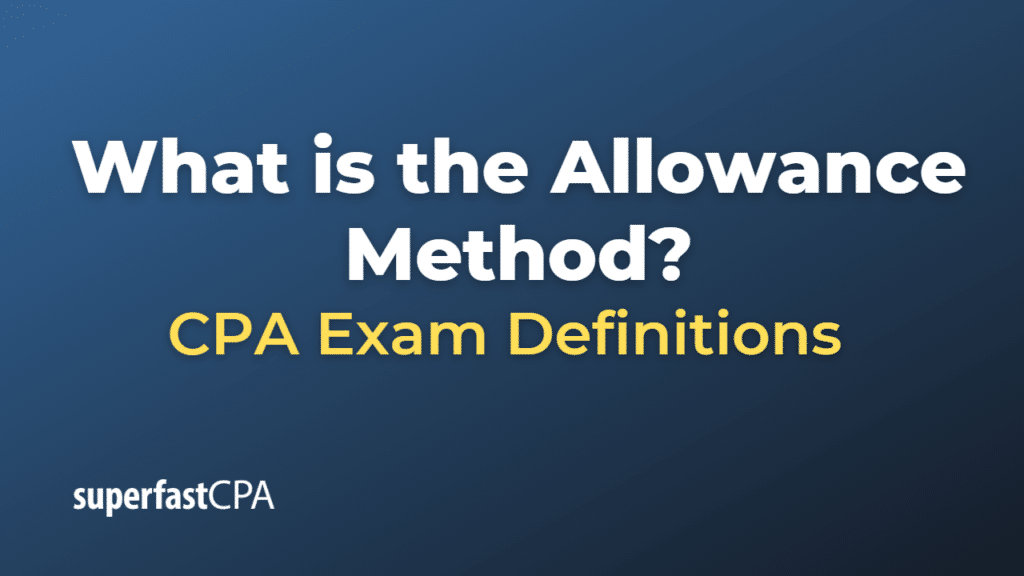Allowance Method
The allowance method is an accounting technique used to account for bad debts or uncollectible accounts receivable. Instead of waiting for an account to become uncollectible and then writing it off, the allowance method allows a company to estimate the amount of accounts receivable that will not be collected in the future and create a reserve or allowance for those anticipated bad debts.
Under the allowance method, a company makes an adjusting entry to record an estimate of bad debts as an expense in the income statement and a corresponding reduction in accounts receivable on the balance sheet. This entry is typically based on historical data, industry trends, or other relevant information.
The main steps in the allowance method are as follows:
- Estimate the amount of uncollectible accounts: The company uses historical data, industry trends, or aging of accounts receivable to estimate the potential bad debts.
- Record the bad debt expense: The company records an adjusting journal entry to debit Bad Debt Expense and credit Allowance for Doubtful Accounts for the estimated amount.
- Write off uncollectible accounts: When the company identifies a specific account as uncollectible, it writes off the account by debiting Allowance for Doubtful Accounts and crediting Accounts Receivable.
- Recovery of bad debts: If a customer pays after the account has been written off, the company reverses the write-off by debiting Accounts Receivable and crediting Allowance for Doubtful Accounts, then records the cash receipt.
The allowance method is generally considered more accurate than the direct write-off method, as it better matches the bad debt expense to the period in which the related revenues were earned, adhering to the matching principle in accrual accounting.
Example of Allowance Method
Let’s assume that XYZ Company has $100,000 in accounts receivable at the end of the year. Based on historical data and trends, XYZ Company estimates that 5% of the accounts receivable will be uncollectible. Here’s how the allowance method would work in this example:
- Estimate the amount of uncollectible accounts: Uncollectible accounts = 5% * $100,000 = $5,000
- Record the bad debt expense: XYZ Company would record the following adjusting journal entry at the end of the year: Debit: Bad Debt Expense $5,000 Credit: Allowance for Doubtful Accounts $5,000
This entry increases the bad debt expense on the income statement and creates a reserve for uncollectible accounts on the balance sheet.
- Write off uncollectible accounts: Suppose XYZ Company identifies that a customer with an outstanding balance of $1,000 is unable to pay the amount due. XYZ Company would then write off the account by recording the following journal entry: Debit: Allowance for Doubtful Accounts $1,000 Credit: Accounts Receivable $1,000
This entry reduces both the Allowance for Doubtful Accounts and the Accounts Receivable balance.
- Recovery of bad debts: Assume the customer who previously owed $1,000 unexpectedly pays the amount in full. XYZ Company would first reverse the write-off with the following journal entry: Debit: Accounts Receivable $1,000 Credit: Allowance for Doubtful Accounts $1,000
Next, XYZ Company would record the cash receipt as follows: Debit: Cash $1,000 Credit: Accounts Receivable $1,000
These entries restore the customer’s account balance and record the receipt of cash.













